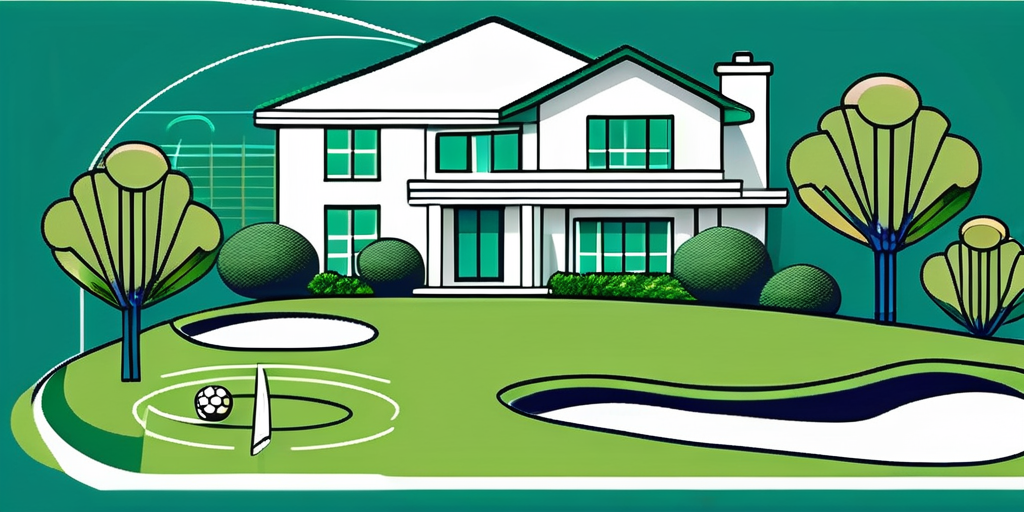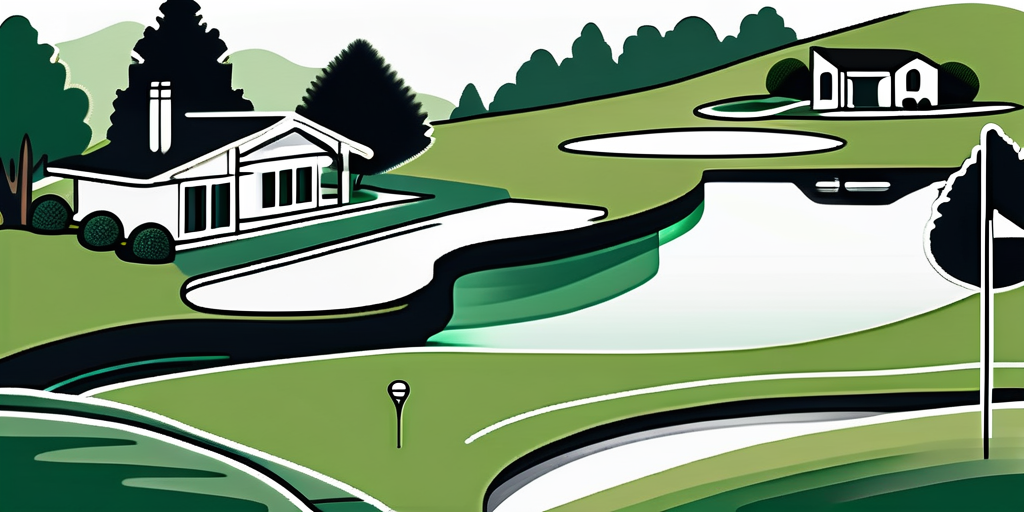
Investing in golf homes presents a unique opportunity for both golf enthusiasts and real estate investors alike. As the popularity of golf continues to rise, so does the potential for lucrative returns in this niche market. This guide aims to take you through various aspects of golf home investment, providing you with insights that will help you make informed decisions and, ultimately, maximize your returns.
Before you dive headfirst into the world of golf home investment, it’s essential to grasp what it involves. Golf home investments are properties located close to or within golf communities that cater to avid golfers. These properties can range from cozy condos to sprawling estates and can be enjoyed personally or rented out to other golf lovers.

So, why invest in a golf home? For starters, the lifestyle associated with golfing communities is appealing. Many people are drawn to serene landscapes and shared amenities like clubhouses, swimming pools, and, of course, golf courses. It's not just a property; it's a lifestyle choice.
Additionally, investing in golf homes can lead to strong rental income potential, especially during peak golfing seasons. Locations with a vibrant golf culture often attract vacationers looking for short-term rental options, enhancing your investment's profitability. The allure of being able to spend weekends on the greens while also generating income from your property is a compelling reason for many investors.
While the allure of golf home investments is significant, it's essential to consider a few key factors before jumping in. First and foremost, location is critical. Properties near renowned golf courses or in established golf communities tend to hold their value better and attract more interest.
Also, assess the amenities offered. A home situated in a community with a well-maintained golf course, tennis courts, and recreational facilities will likely have a higher resale value. And don't forget about the local real estate market—knowing whether it's a buyer's or seller's market can inform your investment strategy. Furthermore, consider the community's overall vibe; a friendly, welcoming atmosphere can enhance your personal enjoyment and attract renters who are looking for more than just a place to stay. Engaging with local events, golf tournaments, and social gatherings can also enrich your experience as an owner and investor, creating a sense of belonging that is often sought after in golf communities.
Once you understand the fundamentals of golf home investment, you can employ strategies that help you maximize your returns. Below are several proven tactics to enhance your investment journey.

The classic real estate mantra rings true in the golf home arena as well: buy low and sell high. When scouting for potential golf homes, look for properties that may be undervalued. Perhaps a homeowner is eager to sell, or a house is in an up-and-coming area. A wise purchase here can lead to substantial profits when the market improves.
Once you've made your purchase, keep a close eye on market trends. This knowledge will empower you to sell at the right moment, ensuring you capitalize on the property’s appreciating value. Additionally, networking with local real estate agents who specialize in golf properties can provide you with insider information on upcoming listings or market shifts, giving you a competitive edge.
Don’t underestimate the power of renovations and upgrades when it comes to boosting a golf home's value. Even minor changes can lead to significant changes in property value. Cosmetic upgrades, such as refreshed paint, landscaping improvements, or modern fixtures can have a high impact.
However, consider investing in more substantial renovations too, such as updating kitchens or bathrooms, as these areas typically provide a great return on investment. Your goal should always be to align home improvements with the desires of potential buyers or renters, especially in the golf community context. For instance, incorporating energy-efficient appliances or smart home technology can not only attract environmentally conscious buyers but also add to the overall appeal of the property.
Another popular strategy for boosting returns on golf home investments is to leverage rental income. Golf communities are attractive to vacationers and would-be golfers looking for a place to call home during their golfing holidays.
You can manage short-term rentals through platforms like Airbnb or VRBO, which can often yield a higher income than long-term leases. However, be wary of local regulations regarding short-term rentals in golf communities, as some may have restrictions in place. Additionally, consider offering unique experiences that cater to golf enthusiasts, such as partnerships with local golf courses for discounted tee times, or providing complimentary golf equipment for guests. This not only enhances the rental experience but can also lead to repeat bookings and positive reviews, further establishing your property as a sought-after destination.
The golf home market can be complex, but with the right tools, you can navigate it successfully. By understanding key trends and market dynamics, you'll be able to make more informed and strategic decisions.
Location is paramount in real estate, and this holds true for golf homes. When exploring various golf communities, focus on areas known for their prestigious golf courses and active communities. A location that is consistently popular can lead to better property appreciation over time.
Moreover, consider the surrounding amenities. Properties near shopping, dining, and entertainment options will typically attract a broader range of potential buyers or renters. Proximity to recreational facilities, such as parks and fitness centers, can also enhance the appeal of a golf home, making it attractive not just to avid golfers but to families and retirees seeking a vibrant lifestyle.
Furthermore, the character of the community plays a significant role. A neighborhood with a strong sense of camaraderie and active social events can create an inviting atmosphere, fostering a sense of belonging that many buyers prioritize. Investigating the community's culture and engagement can provide valuable insights into the long-term desirability of a location.
Timing is everything in real estate. Understanding market cycles can significantly affect your investment success. Pay attention to the seasons, as many golf communities experience fluctuations in demand based on the time of year.
Research historical market trends to help determine when to buy or sell. If you can recognize patterns over time, you'll find yourself more strategically positioned to make shrewd investment choices. Additionally, consider external factors such as economic conditions, interest rates, and local real estate developments that can influence market timing. For instance, during economic downturns, properties may be available at lower prices, presenting a potential opportunity for savvy investors.
Another aspect to consider is the impact of seasonal tourism. Many golf communities see an influx of visitors during peak seasons, which can drive up rental demand and property values. Understanding these cycles can help you capitalize on high-demand periods, ensuring you maximize your investment potential.
Looking to the future is crucial in golf home investment. By analyzing factors such as population growth, economic indicators, and changes in lifestyle preferences, you can better predict where the golf home market is headed.
Additionally, be aware of upcoming developments in these areas—new golf courses, hospitality projects, or infrastructure improvements can enhance property values significantly. Keeping an eye on local government plans and zoning changes can provide insights into potential growth areas, allowing you to position yourself ahead of the curve.
Moreover, the rise of remote work has shifted lifestyle preferences for many individuals, leading to increased interest in properties that offer both leisure and work-from-home capabilities. Golf communities that provide high-speed internet and dedicated workspaces are becoming increasingly attractive to buyers looking for a balanced lifestyle. By staying informed about these evolving trends, you can make proactive decisions that align with the future of the golf home market.
No investment journey is complete without a solid financial plan. Proper budgeting and understanding your financial options will pave the way for sustained success in the golf home market.

Creating a realistic budget is paramount before you start your golf home investment journey. Consider not only the purchase price but also closing costs, ongoing maintenance, property taxes, and homeowner association fees, if applicable.
Establish a buffer for unexpected costs—unexpected repairs can quickly eat into your profits. An effectively managed budget ensures that you're in the best position to maximize your returns. Additionally, research the local real estate market to get a better understanding of seasonal fluctuations in property values and rental rates. This insight can help you make informed decisions about when to buy and how to price your property for rental income.
Depending on your financial situation, several financing options may be available. Traditional mortgages are an option, but consider exploring specialized financing options designed for investment properties. These can offer better terms for real estate investors.
Also, don't forget about alternative financing, such as partnering with other investors or looking for private investors. Knowing your options can empower you to choose the path that best suits your investments. Moreover, consider leveraging equity from existing properties to finance your golf home purchase. This strategy can minimize out-of-pocket expenses while allowing you to diversify your investment portfolio.
It’s easy to get caught up in the allure of immediate returns, but keep an eye on the long-term expenses associated with owning a golf home. The ongoing costs, including maintenance, property management, and potential homeowner association fees, can quickly add up.
Proactively planning for these expenses will ensure you don't find yourself in a financial crunch down the road. Setting aside a reserve fund can help you navigate unexpected costs and maintain a steady cash flow from your investment. Additionally, consider the potential for seasonal maintenance tasks, such as landscaping and winterization, which can require significant investment at certain times of the year. By anticipating these periodic expenses, you can better allocate your budget and ensure that your golf home remains a profitable asset over time.